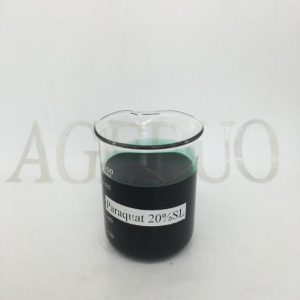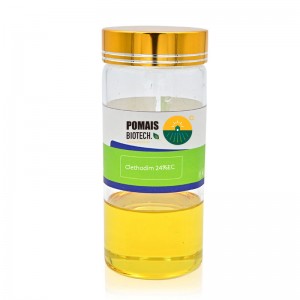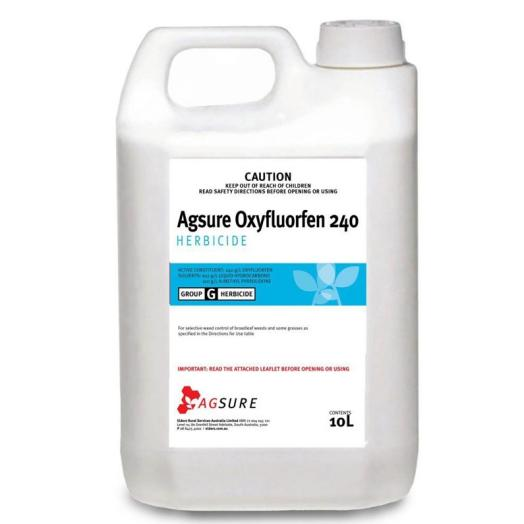Herbicides are agricultural chemicals used to control or eliminate unwanted plants (weeds). Herbicides can be used in agriculture, horticulture, and landscaping to reduce competition between weeds and crops for nutrients, light, and space by inhibiting their growth. Depending on their use and mechanism of action, herbicides can be categorized as selective, non-selective, pre-emergent, post-emergent, contact and systemic herbicides.
What types of herbicides are there?
Based on Selectivity
Selective Herbicides
Selective herbicides are designed to target specific weed species while leaving desired crops unharmed. These are often used in agricultural settings to manage weeds without damaging the crops.
Appropriate Uses:
Selective herbicides are ideal for situations where specific weed species need to be controlled without harming the desired plant. They are commonly used for:
Crops: protect crops such as corn, wheat and soybeans from broadleaf weeds.
Lawns and turf: eliminating weeds such as dandelions and clover without damaging grass.
Ornamental gardens: manage weeds among flowers and shrubs.
Recommended Products:
2,4-D
Weed Control Range: Dandelions, clover, chickweed, and other broadleaf weeds.
Advantages: Effective against a variety of broadleaf weeds, does not harm lawn grasses, visible results within hours.
Features: Easy to apply, systemic action, quick absorption and visible impact.
Dicamba 48% SL
Other formulations: 98% TC; 70% WDG
Weed Control Range: Broadleaf weeds including bindweed, dandelions, and thistles.
Advantages: Excellent control of persistent broadleaf weeds, can be used in grass crops and pastures.
Features: Systemic herbicide, moves throughout the plant, long-lasting control.
Non-Selective Herbicides
Non-selective herbicides are broad-spectrum herbicides that kill any vegetation they come into contact with. These are used for clearing areas where no plant growth is desired.
Appropriate Uses:
Non-selective herbicides are best suited for areas where complete vegetation control is needed. They are suitable for:
Land clearing: prior to construction or planting.
Industrial areas: around factories, roadsides and railroads where all vegetation needs to be removed.
Paths and driveways: to prevent any vegetation from growing.
Recommended Products:
Glyphosate 480g/l SL
Other formulations: 360g/l SL, 540g/l SL ,75.7%WDG
Weed Control Range: Annual and perennial grasses and broadleaf weeds, sedges, and woody plants.
Advantages: Highly effective for total vegetation control, systemic action ensures complete eradication.
Features: Absorbed through foliage, translocated to roots, various formulations (ready-to-use, concentrates).
Paraquat 20% SL
Other formulations: 240g/L EC, 276g/L SL
Weed Control Range: Broad spectrum, including annual grasses, broadleaf weeds, and aquatic weeds.
Advantages: Fast-acting, non-selective, effective in non-crop areas.
Features: Contact herbicide, requires careful handling due to high toxicity, immediate results.
Based on Timing of Application
Pre-Emergent Herbicides
Pre-emergent herbicides are applied before weeds germinate. They form a chemical barrier in the soil that prevents weed seeds from sprouting.
Appropriate Use:
Pre-emergence herbicides are ideal for preventing weeds from germinating and are commonly used in:
Lawns and gardens: to stop weed seeds germinating in the spring.
Farmland: reduce weed competition before planting crops.
Ornamental flower beds: maintain clean, weed-free beds.
Recommended Products:
Pendimethalin 33% EC
Other formulations: 34%EC,330G/L EC,20%SC,35%SC,40SC,95%TC,97%TC,98%TC
Weed Control Range: Annual grasses and broadleaf weeds such as crabgrass, foxtail, and goosegrass.
Advantages: Long-lasting pre-emergent control, reduces weed pressure, safe for various crops and ornamentals.
Features: Water-based formulation, easy to apply, minimal crop injury risk.
Trifluralin
Weed Control Range: A wide range of annual weeds including barnyardgrass, chickweed, and lambsquarters.
Advantages: Effective pre-emergent weed control, suitable for vegetable gardens and flower beds.
Features: Soil-incorporated herbicide, provides a chemical barrier, long residual activity.
Post-Emergent Herbicides
Post-emergent herbicides are applied after weeds have emerged. These herbicides are effective for controlling actively growing weeds.
Appropriate Uses:
Post emergence herbicides are used to kill weeds that have emerged and are actively growing. They are suitable for:
Crops: control weeds that emerge after the crop has grown.
Lawns: to treat weeds that have emerged in grass.
Ornamental gardens: for topical treatment of weeds between flowers and shrubs.
Recommended Products:
Clethodim 24%EC
Other formulations: Clethodim 48%EC
Weed Control Range: Annual and perennial grass weeds such as foxtail, johnsongrass, and barnyardgrass.
Advantages: Excellent control of grass species, safe for broadleaf crops, quick results.
Features: Systemic herbicide, absorbed by foliage, translocated throughout the plant.
Based on Mode of Action
Contact Herbicides
Contact herbicides kill only the plant parts they touch. They work quickly and are primarily used for controlling annual weeds.
Appropriate Uses:
Contact herbicides are indicated for quick, temporary weed control. They are suitable for:
Localized treatments: only specific areas or individual weeds need to be treated.
Agricultural fields: for rapid control of annual weeds.
Aquatic environments: for controlling weeds in water bodies.
Recommended Products:
Diquat 15% SL
Other formulations: Diquat 20% SL, 25% SL
Weed Control Range: Broad spectrum including annual grasses and broadleaf weeds.
Advantages: Rapid action, effective in both agricultural and aquatic environments, excellent for spot treatments.
Features: Contact herbicide, disrupts cell membranes, visible results within hours.
Systemic Herbicides
Systemic herbicides are absorbed by the plant and move throughout its tissues, killing the entire plant including its roots.
Appropriate Uses:
Systemic herbicides are ideal for complete, long-lasting control of weeds, including roots. They are used for:
Farmland: for control of perennial weeds.
Orchards and vineyards: for tough, deep-rooted weeds.
Non-crop areas: for long-term vegetation control around buildings and infrastructure.
Recommended Products:
Glyphosate 480g/l SL
Other formulations: 360g/l SL, 540g/l SL ,75.7%WDG
Weed Control Range: Annual and perennial grasses, broadleaf weeds, sedges, and woody plants.
Advantages: Highly effective, ensures complete eradication, trusted and widely used.
Features: Systemic herbicide, absorbed by foliage, translocated to roots, available in various formulations.
Imazethapyr Herbicide – Oxyfluorfen 240g/L EC
Other formulations: Oxyfluorfen 24% EC
Weed Control Range: Broad-spectrum control in leguminous crops, including annual grasses and broadleaf weeds.
Advantages: Effective and safe for leguminous crops, long-lasting control, minimal crop damage.
Features: Systemic herbicide, absorbed by foliage and roots, translocated throughout the plant, broad-spectrum weed control.
Post time: May-29-2024














